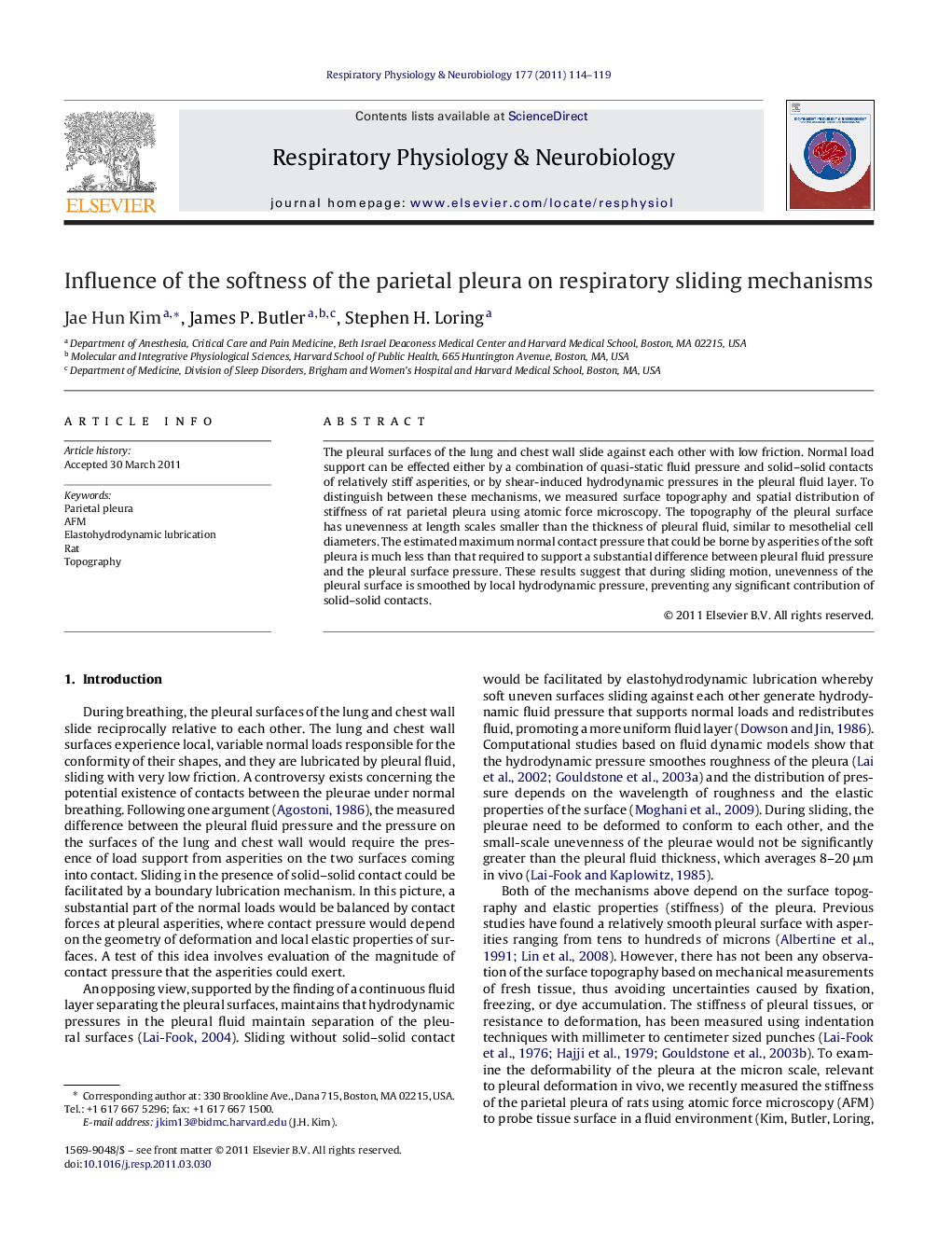| Article ID | Journal | Published Year | Pages | File Type |
|---|---|---|---|---|
| 5926522 | Respiratory Physiology & Neurobiology | 2011 | 6 Pages |
Abstract
The pleural surfaces of the lung and chest wall slide against each other with low friction. Normal load support can be effected either by a combination of quasi-static fluid pressure and solid-solid contacts of relatively stiff asperities, or by shear-induced hydrodynamic pressures in the pleural fluid layer. To distinguish between these mechanisms, we measured surface topography and spatial distribution of stiffness of rat parietal pleura using atomic force microscopy. The topography of the pleural surface has unevenness at length scales smaller than the thickness of pleural fluid, similar to mesothelial cell diameters. The estimated maximum normal contact pressure that could be borne by asperities of the soft pleura is much less than that required to support a substantial difference between pleural fluid pressure and the pleural surface pressure. These results suggest that during sliding motion, unevenness of the pleural surface is smoothed by local hydrodynamic pressure, preventing any significant contribution of solid-solid contacts.
Related Topics
Life Sciences
Biochemistry, Genetics and Molecular Biology
Physiology
Authors
Jae Hun Kim, James P. Butler, Stephen H. Loring,
